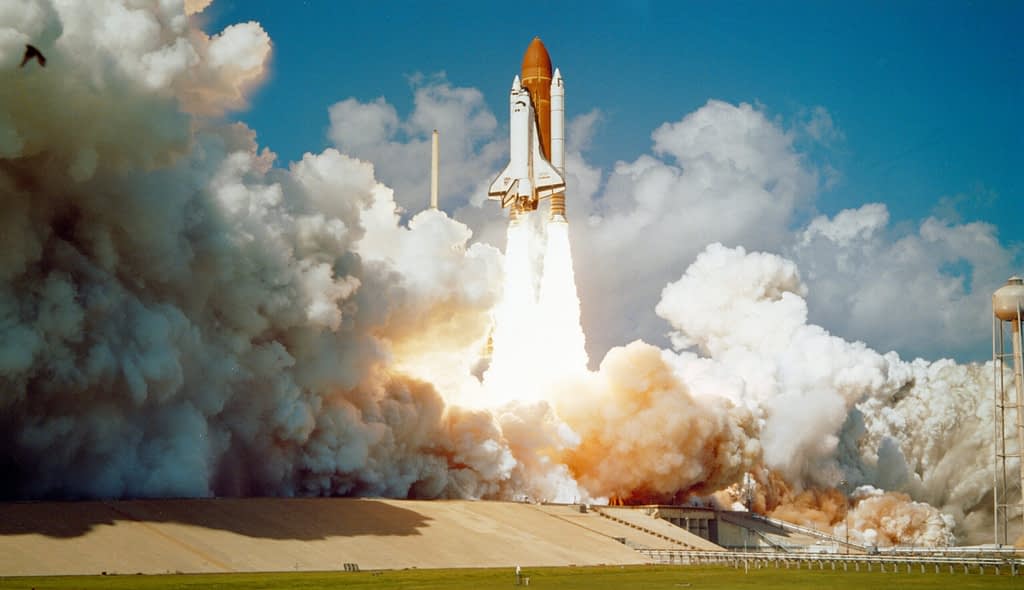The first private company to successfully land on the Moon is heading to Nasdaq on August 7, 2025, with a public stock offering priced at $41-43 per share. What drove institutional investors to push Firefly Aerospace to raise its original price range by 15% just days before entering capital markets? The Texas-based firm has already secured contracts worth $1.12 billion and is becoming the most watched debut of the year in the space technology sector, which is projected to reach $1.8 trillion by 2035.
IPO price range increased 15% due to institutional demand for shares
Firefly Aerospace originally planned to enter capital markets with shares priced at $35-39, but strong interest from institutional investors forced the company to raise the range to $41-43. At the upper price limit, the company will offer 16.2 million shares with an option for an additional 2.43 million through underwriter options.
The public stock offering is organized by renowned investment banks Goldman Sachs, J.P. Morgan, Jefferies and Wells Fargo, with shares trading under ticker FLY. This price range increase of more than 15% signals growing investor confidence in commercial space technologies following the successful lunar landing in March 2025.
Historic Moon landing opened doors to new contracts
Firefly became the first commercial company to successfully land on the Moon on March 2, 2025. Their lunar module Blue Ghost delivered 10 NASA scientific experiments to the Mare Crisium region worth over $100 million.
This technological breakthrough led to securing additional government contracts, including a $176.7 million NASA agreement for a lunar south pole landing in 2029. Blue Ghost isn’t just a transport vehicle, but a complete lunar platform capable of controlled operations after landing.
NASA and Pentagon secured Firefly contracts worth $1.12 billion
Firefly reports signed contracts worth $1.12 billion, representing firm orders for the coming years. The customer portfolio includes NASA, U.S. Air Force, Space Force, Lockheed Martin and Northrop Grumman.
Revenue diversification reduces dependence on a single customer and provides a stable foundation for stock market growth. Key products include:
- Alpha launch vehicle for deploying up to 1,300 kg of payload for $15 million
- Upcoming Eclipse rocket with capacity over 16,000 kg payload starting 2026
- Elytra space tug for satellite transfers between orbits
- Blue Ghost lunar landers for commercial and government missions
Firefly demonstrates significant competitive advantage in deployment speed – it can integrate and launch a spacecraft in just 27 hours, while competitor Rocket Lab manages the same process in 24 hours. SpaceX offers cheaper price per kilogram of payload, but its crowded manifest doesn’t allow missions on short notice.
Q1 2025 revenue reached the level of the entire previous year
Firefly generated $60.8 million in 2024, representing 10% year-over-year growth. The fundamental change came in the first quarter of 2025, when the company reported revenue of $55.9 million – nearly as much as the entire previous year.
This four-fold acceleration in growth indicates a significant turnaround in business activity. Analysts attribute this to a combination of successful lunar landing that opened new contracts and general revival in the space technology market.
However, the company is not yet turning a positive result – in 2024 it reported a net loss of $231.1 million. In the first half of 2025, it spent more than $86 million from operating cash. These results are typical for technology startups in the scaling phase, where capital investments precede stable returns.
Space technology IPO arrives during sector boom and return to markets
Firefly’s public stock offering comes during a period of revival in the American IPO market after several years of decline. The company is the fifth American firm to reach orbit in the past 15 years, and the second private company after successful lunar landing.
The global space technology market is projected to reach $1.8 trillion by 2035. Among other space companies preparing for capital markets are Karman Space Holdings and Voyager Technologies, but Firefly is viewed as the most promising opportunity due to its combination of working technologies and paying customers.
Competition is intensifying however – Rocket Lab plans to launch its Neutron rocket with 13-ton capacity by end of 2025, while Chinese companies like Space Pioneer are rapidly developing reusable systems. Firefly enters Nasdaq with solid foundations and proven capabilities in rapid deployment and lunar missions.




